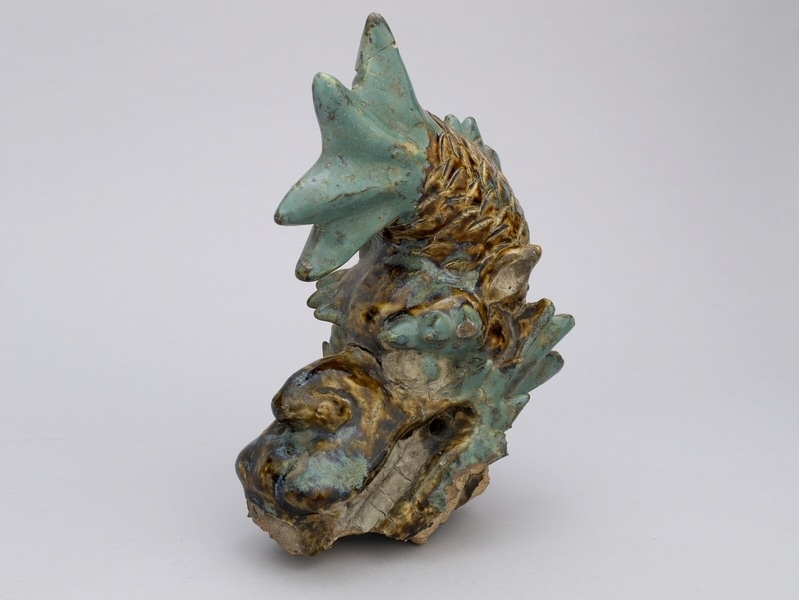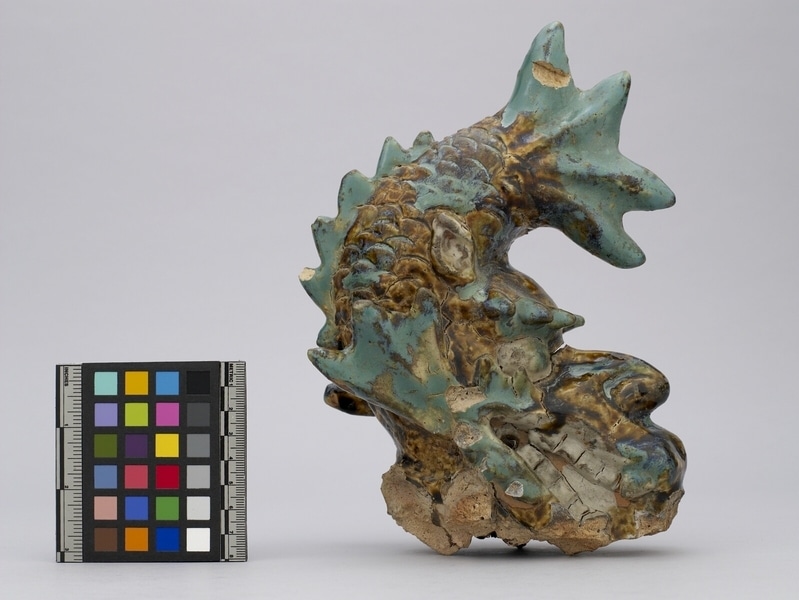Urn Figure Item Number: N2.278 from the MOA: University of British Columbia


Description
Figure of a sea creature that has broken off the top of a funerary urn. The stylized, brown and turquoise ceramic creature is called a shachihoko (鯱鉾/鯱), a mythical sea creature with the head of a tiger or dragon and the body of a fish. The creature's tail curves upwards and over its back.
History Of Use
The urn associated with this figure is known as jiishigaami or jīshigāmi (ジーシガーミ) in Okinawan, and zushigame (厨子甕) in Japanese. Okinawans used to practice shinkuchi/senkotsu (シンクチ/洗骨/ bone-washing) as a form of reburial, and the washed bones were placed in such urns. Historically, the deceased were either left in the open air or placed in a large family tomb during the first period of internment, and after several years, the family would gather and clean the bones, before placing them in the jiishigaami. Okinawa (沖縄) was ruled by the Ryūkyū ōkoku (琉球王国/ Ryūkyū kingdom) from 1429 until Japan annexed the island in 1879. Trade with Japan, China, Korea, and Southeast Asia influenced social practices in Okinawa, but distinct cultures in the archipelago remain vibrant.
Cultural Context
funerary urn
Item History
- Made in Okinawa, Japan before 1954
- Collected by Wayne Suttles during 1954
- Owned by Wayne Suttles before 1954
- Received from Wayne Suttles (Seller) and University Purchase (Funding source) during 1954
What
Who
- Culture
- Okinawan
- Field Collector
- Wayne Suttles
- Previous Owner
- Wayne Suttles
- Received from
- Wayne Suttles (Seller) and University Purchase (Funding source)
Where
- Holding Institution
- MOA: University of British Columbia
- Made in
- Okinawa, Japan
When
- Creation Date
- before 1954
- Collection Date
- during 1954
- Ownership Date
- before 1954
- Acquisition Date
- during 1954
Other
- Item Classes
- ceramics
- Condition
- fair
- Current Location
- Case 82
- Accession Number
- 2171/0076